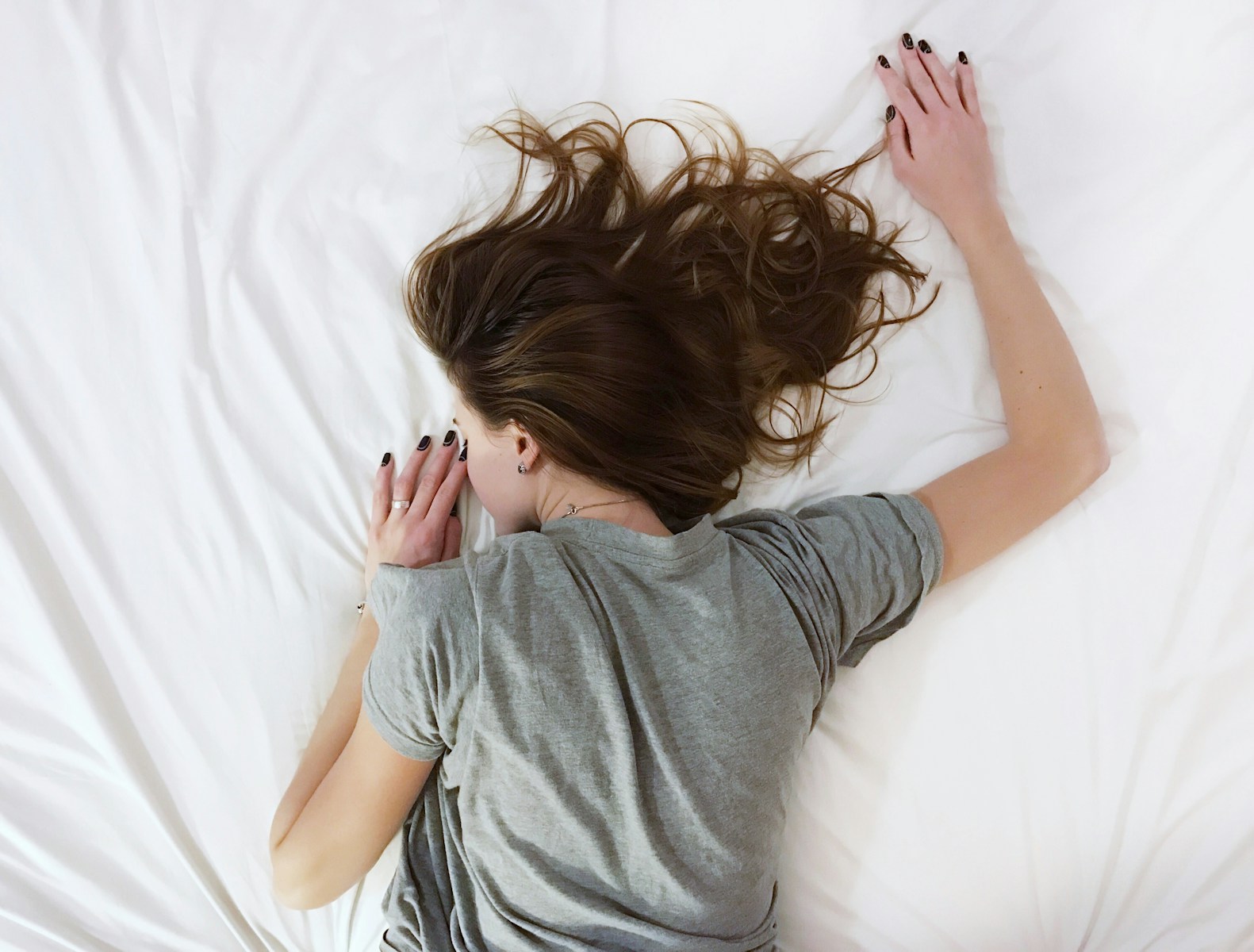In an age where technology permeates every aspect of our lives, sleep improvement apps have emerged as a beacon of hope for those struggling with sleep-related issues. These applications are designed to assist users in achieving better sleep quality through various methods, including relaxation techniques, sleep tracking, and personalized recommendations. The increasing prevalence of sleep disorders, exacerbated by stress, lifestyle choices, and the omnipresence of screens, has led to a growing demand for innovative solutions.
Sleep improvement apps cater to this need by providing users with tools and resources that can help them understand their sleep patterns and develop healthier habits. The significance of sleep cannot be overstated; it is essential for physical health, mental well-being, and overall quality of life. Research indicates that inadequate sleep can lead to a myriad of health problems, including obesity, cardiovascular disease, and impaired cognitive function.
As a result, the development of sleep improvement apps has become a focal point for both tech developers and health professionals. These apps not only offer insights into sleep behavior but also empower users to take control of their sleep hygiene through actionable strategies. With the right app, individuals can embark on a journey toward restorative sleep, ultimately enhancing their daily performance and emotional resilience.
Key Takeaways
- Sleep improvement apps are designed to help users achieve better sleep quality and overall wellness.
- Features to look for in sleep improvement apps include sleep tracking, relaxation techniques, customization options, and integration with other health and wellness apps.
- Calming and relaxation techniques in sleep improvement apps may include guided meditation, soothing music, and breathing exercises to help users unwind and prepare for sleep.
- Tracking and monitoring sleep patterns with sleep improvement apps can provide valuable insights into sleep quality, duration, and disturbances.
- Customization and personalization options in sleep improvement apps allow users to tailor their experience to their specific sleep needs and preferences.
Features to Look for in Sleep Improvement Apps
When selecting a sleep improvement app, it is crucial to consider a variety of features that can enhance the user experience and effectiveness of the application. One of the most important features is sleep tracking capability. This allows users to monitor their sleep patterns over time, providing valuable data on sleep duration, quality, and disturbances.
Many apps utilize advanced algorithms to analyze this data and generate insights that can help users identify trends and make informed decisions about their sleep habits. For instance, an app might reveal that users consistently wake up during certain hours or that they experience restless nights after consuming caffeine late in the day. Another essential feature is the inclusion of guided relaxation techniques or meditation exercises.
These tools can help users unwind before bedtime, reducing anxiety and promoting a sense of calm. Some apps offer a library of audio tracks designed specifically for relaxation, including soothing sounds of nature or calming music. Additionally, features such as bedtime reminders and customizable alarm settings can further enhance the user experience by encouraging consistent sleep schedules.
The ability to set gentle wake-up alarms that gradually increase in volume can also help users wake up feeling more refreshed rather than jolted awake by a loud alarm.
Calming and Relaxation Techniques in Sleep Improvement Apps
Calming and relaxation techniques are at the heart of many sleep improvement apps, as they play a pivotal role in preparing the mind and body for restful sleep. One popular method is guided meditation, which often involves a narrator leading users through a series of breathing exercises and visualizations aimed at reducing stress and promoting relaxation. For example, an app may offer a 10-minute guided meditation focused on letting go of the day’s worries, allowing users to transition smoothly into a state conducive to sleep.
In addition to meditation, many apps incorporate progressive muscle relaxation techniques. This method involves systematically tensing and relaxing different muscle groups throughout the body, helping users release physical tension that may be contributing to their inability to fall asleep. Some apps even provide audio cues or visual prompts to guide users through this process effectively.
Furthermore, soundscapes—such as white noise, rain sounds, or ocean waves—are frequently included in these applications to create a soothing auditory environment that masks disruptive noises and fosters a tranquil atmosphere for sleep.
Tracking and Monitoring Sleep Patterns with Sleep Improvement Apps
| App Name | Number of Downloads | User Ratings | Features |
|---|---|---|---|
| Sleep Cycle | 5 million | 4.7/5 | Sleep tracking, smart alarm, sleep analysis |
| Headspace | 10 million | 4.6/5 | Guided sleep meditations, wind-down exercises |
| Calm | 50 million | 4.8/5 | Sleep stories, meditations, soundscapes |
| Pillow | 2 million | 4.5/5 | Sleep tracking, heart rate analysis, snore recording |
The ability to track and monitor sleep patterns is one of the most valuable aspects of sleep improvement apps. By collecting data on various parameters such as total sleep time, time spent in different sleep stages (light, deep, REM), and instances of waking during the night, these apps provide users with a comprehensive overview of their sleep health. This information can be instrumental in identifying specific issues that may be affecting sleep quality.
For instance, if an app indicates that a user is spending an unusually high amount of time in light sleep, it may prompt them to explore potential causes such as stress or environmental factors. Many advanced sleep tracking apps utilize wearable technology or smartphone sensors to gather data passively throughout the night. This seamless integration allows for continuous monitoring without requiring active input from the user.
Some apps even offer insights based on trends over time, helping users recognize patterns related to lifestyle changes or external influences such as diet or exercise. By visualizing this data through graphs and charts, users can gain a clearer understanding of their sleep habits and make informed adjustments to improve their overall well-being.
Customization and Personalization Options in Sleep Improvement Apps
Customization and personalization are key elements that enhance the effectiveness of sleep improvement apps. Users have unique needs and preferences when it comes to their sleep routines; therefore, an app that allows for tailored experiences can significantly improve user engagement and outcomes. Many apps offer customizable features such as personalized sleep goals based on individual health metrics or lifestyle factors.
For example, an app might suggest specific bedtime routines or relaxation techniques based on a user’s reported stress levels or previous sleep patterns. Additionally, some apps allow users to select their preferred sounds for relaxation or wake-up alarms. This level of personalization ensures that users feel more connected to the app and are more likely to incorporate its recommendations into their daily lives.
Furthermore, adaptive algorithms can analyze user behavior over time and adjust suggestions accordingly. If a user consistently reports difficulty falling asleep after using their phone late at night, the app might recommend setting stricter screen time limits or suggest alternative evening activities that promote relaxation.
Integration with Other Health and Wellness Apps
The integration of sleep improvement apps with other health and wellness applications is becoming increasingly common as users seek holistic approaches to their well-being. Many popular fitness trackers and health monitoring devices now offer compatibility with sleep apps, allowing users to consolidate their health data in one place. This integration enables individuals to see how factors such as physical activity levels, nutrition, and stress management correlate with their sleep quality.
For instance, an app might sync with a fitness tracker to analyze how exercise impacts nightly rest. Users may discover that days with higher physical activity levels lead to deeper sleep stages or fewer awakenings during the night. Additionally, some apps allow for integration with mindfulness or meditation platforms, providing users with a comprehensive toolkit for managing stress and improving overall mental health.
By combining insights from various sources, users can develop a more nuanced understanding of their health and make informed decisions that promote better sleep.
User Reviews and Ratings of Top Sleep Improvement Apps
User reviews and ratings serve as invaluable resources when evaluating the effectiveness of sleep improvement apps. Potential users often turn to these reviews to gauge the experiences of others who have faced similar challenges with sleep issues. High ratings typically indicate that an app has successfully met user needs through its features and functionality.
For example, an app that consistently receives praise for its user-friendly interface may attract individuals who are new to technology or those who prefer straightforward solutions. Conversely, negative reviews can highlight potential shortcomings or areas for improvement within an app. Users may express frustration over technical glitches or lack of customer support when encountering issues.
By examining both positive and negative feedback, prospective users can make informed decisions about which app aligns best with their specific requirements. Additionally, many app stores provide aggregated ratings based on user feedback, allowing individuals to quickly assess the overall satisfaction level associated with each application.
Conclusion and Recommendations for Using Sleep Improvement Apps
As technology continues to evolve, so too do the tools available for improving our health and well-being. Sleep improvement apps represent a significant advancement in our understanding of sleep hygiene and its impact on daily life. By leveraging features such as tracking capabilities, guided relaxation techniques, customization options, and integration with other health platforms, these applications empower users to take charge of their sleep health.
When considering which app to use, individuals should prioritize those that align with their personal preferences and needs while also taking into account user reviews and ratings for additional insights. It is essential to approach these tools as part of a broader strategy for enhancing overall well-being rather than relying solely on technology for solutions. By combining the insights gained from these apps with lifestyle changes—such as establishing consistent bedtime routines or creating conducive sleeping environments—users can pave the way toward achieving restorative sleep and improved quality of life.




